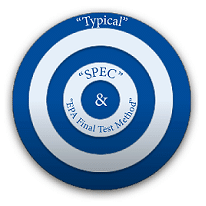For anyone out there who is confused about which upright ultra-low freezer has the lowest energy consumption in real world conditions, let me make it simple for you . . .
According to test data, publically submitted using the EPA ENERGY STAR® Final Test Method, the Stirling Ultracold SU780UE freezer uses 9.24 kWh/day. No other comparable ULT freezer on the market can substantiate energy consumption this low, using the industry standard test method. By the way, we would be more than happy to send you our test data in the required EPA format.
Reporting a single overall number, this test method was created by the industry and the EPA to provide a simple way for customers to compare ULT freezer’s energy use. This is analogous to the combined city/highway MPG reported for passenger vehicles by the EPA. For example, a 2015 Subaru Outback has a combined city/highway mileage of 28 mpg (www.fueleconomy.gov). It is well understood by drivers that their actual mileage depends upon a number of factors, including how they drive. Also note that mileage will differ somewhat between one vehicle and another because of manufacturing variability.
While this should be simple, there are different ways to test a freezer and there is confusion out there about what is meant by “typical” versus “specifications” published in sales literature. So let’s look at some definitions . . .
What is the Definition of “Typical”?
The dictionary definition of the word “typical” is, “representative characteristic of a person or thing.” Some within our industry have chosen to represent ULT freezer energy use as “typical” in their published literature. If a number of identical model freezers are tested, this suggests that some units will be more energy efficient while others will be less energy efficient than stated. Given the lack of a clear definition here, it would be reasonable to assume that “typical” is the average, suggesting that about half the freezers will perform worse than typical. This terminology is even less clear, and even less useful, if the manufacturer uses a proprietary test method, which may bear no resemblance to actual operating conditions.
What is the Definition of “Specification”?
The dictionary definition of the word “specification” is, “an act of describing or identifying something precisely or of stating a precise requirement . . . a standard of workmanship, materials, etc. required to be met in a piece of work.” In other words, a specification indicates specific performance that must always be met under the test condition. Our published specification for energy use is “< 9 kWh/day at -80°C setpoint” for the SU780UE in steady state operation with the door closed. (While not as comprehensive as the EPA Standard Test Method, our end-of-line testing procedure balances the industry’s highest energy efficiency standards with the practical time constraints of the production environment.)
To summarize and contrast these two definitions . . . A “specification” is a promise. “Typical” performance is not.
Ask for Test Results Data using the EPA ENERGY STAR Final Test Method
We’re proud of our energy use specification and we test every freezer we manufacture to this standard. Because test methods vary, you should not rely on sales literature when making a ULT buying decision, and you should always ask the freezer manufacturer to provide test data using the published EPA ENERGY STAR® Final Test Method. If they cannot provide this data, you should question the integrity of their marketing material.
The fact that our published spec varies only slightly from the EPA test, which prescribes door openings in the procedure, only proves my point. Integrity and transparency are important in an industry where numbers are thrown around so casually.
By the way the typical energy consumption of our freezers shipped during September was 7.9 kWh/day! This compares to a specification of 9 kWh/day. In the interest of transparency, I am defining “typical” here to mean the average at a -80°C set point in steady state operation―with the door closed.









